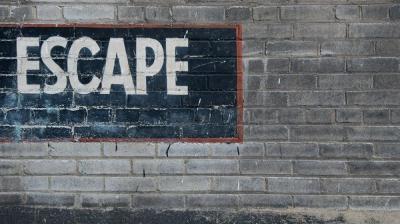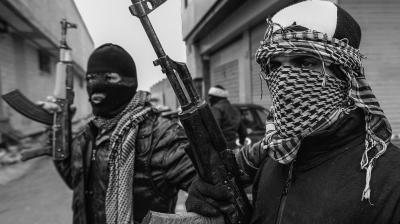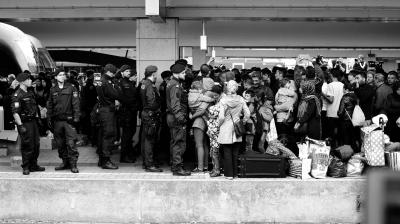Policy implications of entrenched militia control in Assad-held Syria
The success of the regime offensive in Aleppo has ensured continued rule by the Syrian President Assad. Western conversations are already focusing on preparations for ‘the day after’ the Islamic State’s capital, Raqqa, has been taken. [i] What the Western policy focus on opposition-held areas overlooks is the increasing fragmentation and mutation of control in regime-administered areas, many of which are at present mortgaged to allied militias and risk making Assad’s reconquest of Syria a Pyrrhic victory.
As pro-regime militias may already constitute a larger fighting force than the Syrian Arab Army, there is a real chance of ‘warlord-ization’ of Syria.[ii] The corroded nature of regime-held areas has been deliberately obscured and is far less perceptible for the international community than the hell that Aleppo has become. This commentary argues that control over regime-held areas is more fragmented and President Assad’s writ more constrained than any map would suggest (as also noted in this earlier piece). Discussions about rebuilding and reconstruction efforts for Syria must take these realities into account. [iii]
The warlord-ization of Syria?
Early in the war it became obvious to the regime that the Syrian army could not simultaneously conduct offensive operations and protect the core Damascus-Homs-Aleppo axis as well as the Lattakia and Tartous areas. As a result, the regime made the strategic choice to allocate military forces to its external frontlines, which created a vacuum in areas not directly under threat. This vacuum has been ´managed´ through a mix of government-backed militias (the infamous shabiha) and later militias funded and run by private Syrian businesses to protect their assets.[iv] In need of more manpower, the government consciously relinquished its monopoly on the use of force between 2011 and August 2013, hoping that the militias would be merely a stopgap measure useful to its wartime aims.
In addition, a range of foreign militias (mostly Iranian, Lebanese, and Iraqi) have been heavily involved in fighting on key fronts in Syria such as the border with Lebanon and Aleppo.[v] Yet, as these most of these foreign militias have different objectives and the bulk are likely to leave the country when Assad is restored to power, the focus here is on Syrian non-state armed groups since they are certain to play a role in post-conflict Syria.
Currently regime-affiliated Syrian militias consist of a dizzying array of hyper-local militias aligned with various factions, domestic and foreign sponsors, and local warlords. While some of these groups have political objectives, others are more akin to criminal gangs. Some serve at the behest of a powerful domestic patron, such as Bashar’s cousin Rami Makhlouf, others local strongmen. Other notable militias include businessman Ayman Jabar’s elite military unit the Desert Hawks and militia from the SSNP[vi]. While a handful of these militia are capable of offensive action, all have the ability to terrorize the civilian population under their control. [vii]
The Tiger Forces offer an example of what this can look like in practice: a group which evolved from a network of enforcers used to put down protests in Hama into a cabal of permanent semi-soldiers. Like the shabiha, the Tiger Forces is made up of a diverse group of militia fighters, criminals, and smugglers. Despite this eclectic makeup the Tiger Forces have proven and effective stopgap measure for the Assad regime. As time goes on, however, they have become a more essential part of the regime’s strategy in holding down (re)conquered territory, creating further leverage for these groups.
Such militias will prove a conundrum for restoring public authority and political control in post-conflict Syria. In fact, some militias are already flexing their muscles. For example, in February 2016 Fadi Qarabish, head the Baarins-town militia, successfully fought off a rival militia leader Ahmed Ismail who was backed up by detachments from the Hama air force intelligence.[viii] In the end the Assad regime was unable to force Fadi Qarabish’s militia to submit, which does not bode well for a post-conflict political settlement. Though it is likely that Assad could use a combination of carrots and sticks to dislodge these groups, incidents like this are a foreshadowing of fragmentation and instability in Syria that policy makers should factor into their thinking.
The momentum and perverse incentives of a war economy
In addition to creatively resolving manpower shortages, the cost of the war has also forced the government to resort to innovative methods to pay its soldiers and regime-affiliated militias. These include allowing militias to coerce tariffs at checkpoints and run smuggling operations into and out of opposition areas.[ix] Moreover, the regime doles out houses and businesses to pro-regime militias and government troops that are seized after successful sieges in lieu of financial compensation.[x] Such ‘pillage and plunder’ reward strategies create a perverse incentive for further cleansing of opposition, which are often (but not always) predominantly Sunni, areas and it more deeply engrains a war economy mentality in these pro-regime militia.
In similar vein, Russia is unlikely to be in a position to contribute financially to Syria’s reconstruction at a meaningful scale either. Although Russia’s military intervention in Syria has helped President Assad in retaking strategic territory and blocked efforts to unseat Assad militarily or diplomatically, but the country is laboring under its own set of international sanctions. Coupled with low commodity prices , Russia is probably not interested - or perhaps even capable - in footing the bill for reconstruction.
From this perspective, both allies would like to see a credible political settlement in order to win international buy-in (and finance), knowing that absent it large-scale international reconstruction funding will not be forthcoming. Whether or not Russia and/or Iran is able to pressure Assad into a political settlement that is deemed palpable by the myriad of Syrian opposition groups and the international community is an open question. Western policy makers should condition any reconstruction aid on Russia and Iran being able to deliver a credible and acceptable political settlement, given Assad’s allies’ inability to finance reconstruction themselves.
To engage or not engage
In parallel, thought should be given to whether or not and how to integrate these pro-regime militias into the post-conflict political settlement. As the war in Syria subsides these militias are likely to retain their arms, either overtly or covertly. If arms are retained openly then these militias may be allowed to administer territory in return for being put on a government payroll and some political recognition.
If these groups maintain weapons covertly then there is the possibility that these groups will morph or split into more criminally minded groups. Insights on their possible development trajectories in a context of weak statehood and slowly increasing international support may be gained from other post-conflict transformations where paramilitary or militia groups allied to the incumbent regime transformed (partially) into criminal organizations, such as the Guatemalan Patrullas de Autodefensa Civil (Civil Defense Patrols) or the Kosovo Liberation Army. In this scenario there will be a high likelihood these groups develop international criminal dimensions, aided or abetted by actors in neighboring states .
The regime side of the rebuilding equation
The war economy and militia-ization of Syria has taken deep hold in regime-held areas. While the war is far from over and the contours of the political settlement that may conclude it remain stubbornly unclear, discussions of rebuilding and reconstruction need to take into account the hollowed out nature of regime areas and the real potential for a warlord-ization of large swaths of Syria. Poor governance and fragmentation in regime-held areas of Syria should be the starting point for policy discussions. If and when Western policy makers choose to engage with the Syrian regime on reconstruction, assuming Assad asks for it, they should realize that they do have some leverage vis-à-vis Assad in the form of desperately-needed reconstruction aid. In this scenario aid can conditioned on at a minimal set of political inclusions that address the power and status of these Syrian pro-Assad militias.
One useful decision policy makers can take today is to commit resources for better intelligence gathering and research to their embassies in the region to understanding these pro-regime militia in order to be able to deal with them during a post-conflict phase. At the same time, policy makers should be aware that it is highly likely that the Assad government will try to persuade donors put their focus on rebuilding of formerly rebel-held areas since they will be the most heavily damaged or destroyed and will require the lion’s share of resources. Moreover, it will be loath to admit the frailty of control over the territory it controls and in many cases were never long-held by rebel groups.
[i] This is based partly on the author’s conversations with Western policy and development practitioners. In addition, questions about post-IS Raqqa are already being floated publically. For example see Hisham, M. 2016. What Happens to Raqqa after ISIS Is Defeated? CNN, 21 November (Accessed January 2017)
[ii] Roche, C. 2016 Assad Regime Militias and Shi'ite Jihadis in the Syrian Civil War Bellingcat posted 14 December 2016 (Accessed January 2017)
[iii] The World Bank estimates reconstruction in Syria could cost as much as $180 billion just to return it to pre-war levels . See Kim, J. 2016 Transcript of World Bank Group President Jim Yong Kim's Opening Press Conference. World Bank Interview by John Donnelly., 14 Apr. 2016. Web. (Accessed January 2017)
[iv] Syria's Assad 'legalises' Private Security Firms. Fox News. AFP, 06 Aug. 2013. Web. (Accessed January 2017)
[v] McDowall A. and Rasheed A. 2016 Iraq Militia Fighters Join Battle for Syria's Aleppo. Reuters. Thomson Reuters, 08 September. Web. (Accessed January 2017)
[vi] Syrian Socialist Nationalist Party
[vii] Schneider, T. 2016 The Decay of the Syrian Regime Is Much Worse Than You Think. War on the Rocks, posted 02 September 2016. Web. (Accessed January 2017)
[viii] Ibid
[ix] Araabi, S. and Hilal L. 2016 Reconciliation, Reward and Revenge Analyzing Syrian De-escalation Dynamics through Local Ceasefire Negotiations. Berghof Foundation, November. Web. (Accessed January 2017)
[x] This is happening not only in areas “liberated” by the regime but in places near Lattakia, where Sunnis and others suspected of supporting the opposition have been forced out of their homes . See Regime's Demographic Change Reaches Lattakia City, Slowly and Quietly. 2016 Iqtissad. Translated by The Syrian Observer, 19 October. Web. (Accessed January 2017)
[xi] Al-Saadi, S. 2015 Iran's Stakes in Syria's Economy. Carnegie Endowment for International Peace, 2 June. Web. (Accessed January 2017)
[xii] Op cit World Bank interview




